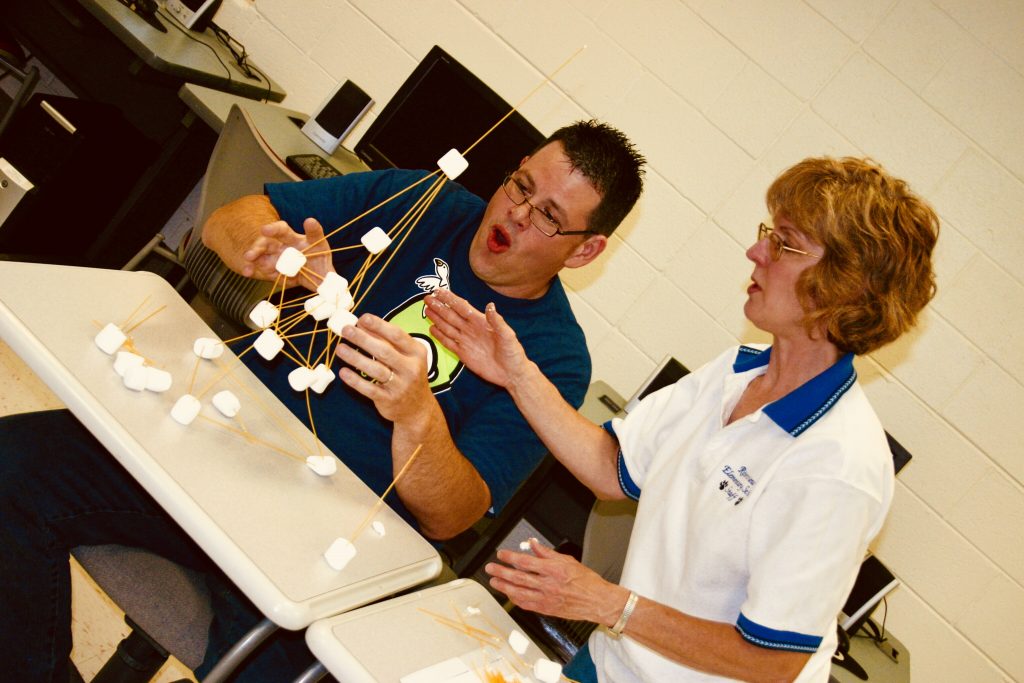
Lectures have long been a staple of the college experience. Chances are, as we think about our own time as a student, we may be reminded of those long, clock-watching classes in which we spent as much time counting the ceiling tiles as we did listening to the professor. Times haven’t changed all that much. In fact, an interesting trend is occurring. Over the last six years, our students have indicated that lectures are one of their least favorite classroom activities, second only to group work. Combine that with the fact that most SPCS classes are nearly 3 hours long (longer for Weekend College), it is no wonder our students are interested in more experiential/hands-on activities (see Table 1 below). Unfortunately, they also report that this type of learning isn’t very common in their classes (see Table 2 below).
Tables 1 and 2 show student responses about learning preferences from our annual SPCS Student Survey. The gap between preferred learning styles and common teaching styles is immediately apparent in the Experiential Learning (Hands-On) rows.
Table 1: Learning Style Preferences of SPCS Students
| Preferred Style | 2010 | 2011 | 2012 | 2013 | 2014 | 2015 | 2016 | 2017 | 2018 |
|---|---|---|---|---|---|---|---|---|---|
| Lectures | 23% | 19% | 21% | 20% | 21% | 19% | 21% | 13% | 14% |
| Discussion | 53% | 54% | 56% | 54% | 52% | 52% | 51% | 59% | 54% |
| Experiential (Hands-on) | 21% | 24% | 29% | 21% | 22% | 25% | 23% | 23% | 24% |
| Small Group | 3% | 3% | 3% | 6% | 3% | 4% | 3% | 4% | 7% |
Table 2: Common Teaching Styles Experienced by SPCS Students
| Experienced Style | 2010 | 2011 | 2012 | 2013 | 2014 | 2015 | 2016 | 2017 | 2018 |
|---|---|---|---|---|---|---|---|---|---|
| Lectures | 38% | 37% | 36% | 35% | 30% | 34% | 31% | 27% | 28% |
| Discussion | 56% | 55% | 55% | 57% | 60% | 55% | 60% | 68% | 62% |
| Experiential (Hands-on) | 4% | 4% | 4% | 4% | 5% | 7% | 5% | 5% | 7% |
| Small Group | 2% | 3% | 5% | 5% | 5% | 4% | 4% | 2% | 4% |
Research is increasingly supporting the preferences of our students by highlighting the various benefits of active learning. When students are engaged in the process, attention, enthusiasm, and retention can all improve. Through active learning, they are ‘alive’ and present in the moment.
A quick Google search produces many resources and articles on the topic. Below are several links to help encourage and inform the conversation:
Start here: What Is Experiential Education?
Cathy N. Davidson, in her Inside Higher Ed article, 10 Key Points About Active Learning, shares a number of ‘lessons’ she has learned over the years as she has explored and experimented with ways to create engaged learning environments.
Vanderbilt University’s Center for Teaching has a thorough website addressing active learning. Here you can learn not only about the theoretical basis of the concept, you can also find some useful classroom strategies.
The University of Tennessee Knoxville provides a wonderful resource outlining The 12 Types of Experiential Learning.
Yale’s Center for Teaching and Learning shares some great ideas regarding Active and Experiential Learning.
Finally, below is an informative and entertaining Ted Talk on transforming education.
When you think of experiential learning, what comes to mind? Apprenticeships? Internships? Study abroad opportunities? Simulations and gaming? These are all great examples and you might immediately determine they are well beyond the possibilities for your class. The good news is there are many ways you can engage your students in active learning. After reading this blog post and exploring some of the resources provided, I encourage you to share your thoughts on experiential learning and include any examples of how you create (or intend to create) an active learning environment within your classes.